by
J. Kovary
Chief Engineer, National Fisheries Inspectorate
Ministry of Agriculture
Budapest, Hungary
As a consequence of the experiments carried out in 1961 and 1962, concerning the introduction of eels into Hungarian natural waters, introductions on a large scale began in 1963. Three of our major lakes were stocked; Lake Balaton, Lake Velence and Lake Ferto. Elvers imported from various countries were used for stocking. Depending on the local circumstances different methods of recapture of silver eels were developed. These methods are improved continuously in the light of experience gained.
The minimum catch size is fixed at 50 cm. Angling is permitted everywhere even during nighttime.
Pertinent data about the above-mentioned lakes are given below.
Surface area: 580 km2, average depth: 2.5 m. In the event of high water-levels in the lake it is drained through a sluice at the outlet on the channel Sió. The stream flow capacity of this channel is 50 m3/sec. Drainage of the lake usually takes place in early spring and in late autumn.
Table I
| Stocking rates | |
| Year | Elvers (in millions) |
| 1963 | 4.2 |
| 1964 | 4.0 |
| 1965 | 4.8 |
| 1966 | 3.7 |
| 1967 | 4.0 |
| 1968 | 2.0 |
| 1969 | 2.0 |
| 1970 | 4.5 |
Catches in tons
| Year | fykes | eel-racks | anglers | total |
| 1966 | - | - | 2.9 | 2.9 |
| 1967 | - | - | 3.6 | 3.6 |
| 1968 | 4.4 | - | 5.1 | 9.5 |
| 1969 | 3.4 | 22.2 | 7.2 | 32.8 |
| 1970. 15 Sept. | 5.0 | 39.5 | 7.5 | 52.0 |
The fykes used belong to the type of big fyke nets. They have three main parts as described in Figure 1. The mesh size is 18–28 mm.
The fykes are set up near the ready banks with leaders mounted in the reeds. They are fished from April to November. Every 2–4 weeks the nets are taken from the water and dried in order to protect them from algae. These fykes catch not only eels but also other fish. Catches are best when the fykes are located in the path of the prevailing wind.
The disadvantages are: they become covered with algae in a short time; many small pike-perches are caught, and get killed, and because of shipping and of coastal weekend-houses they cannot be used at the best places. Because of the disadvantages outlined above, no further development of this method is planned for Lake Balaton.
The eel-racks of this lake are incorporated in the sluices at the inlet to the Sió, which have two gates. The width of each gate is 4 m, and its maximum discharge capacity is 30 m3/sec. Each gate is fitted with an eel-rack. The eel-rack consists of a bottom fish screen set on steel frames; a catching box; lifting devices with an overhead gantry. The steel frames are hinged so that it is possible to adjust the angle of inclination of the screens to suit the rate of outflow and in the event of ice floes being present in the outflow from the lake to remove the eel-racks altogether from the sluice outlets. Each of the catching tanks has a cubic capacity of 2 m3 which is sufficient to hold 1 ton of fish. The tanks can be lifted and placed directly on trucks by the lifting devices suspended from the overhead gantry which are used also to adjust the racks. Each rack has a spare catching tank which can be installed to replace the one removed.
The eel-racks are fished during periods of draining the lake from early spring - when the ice has melted - to late autumn. Experience has shown that the daily catch is influenced by water-temperature, wind-direction, and the phases of the moon. On the occurrence of a favourable wind (northwest); 5–11°C water-temperature and in the first and last phase of the moon the daily catch is between 1–2 tons. At the time of full moon the daily catch is reduced to 0.1 tons. During summer-draining catches are minimal - 0.01–0.05 tons.
Surface area: 23 km2; average depth: 1 m. Superfluous water is drained through a sluice at the entrance to the channel Dinnyés-Kajtor. The stream flow capacity of the channel is 6.0 m3/sec. Drainage usually takes place in early spring.
Table II
| Stocking rates | |||||
| Year | Elvers (in millions) | ||||
| 1963 | 1.60 | ||||
| 1964 | 0.06 | ||||
| 1965 | 0.35 | ||||
| 1966 | 0.48 | ||||
| 1967 | 0.52 | ||||
| 1968 | 0.50 | ||||
| 1969 | 0.30 | ||||
| 1970 | 0.40 | ||||
| Catches | |||||
| Year | Small utensils (traps, lines) | Electrified trawling | Eel-channel weir | Anglers | Total |
| 1966 | - | - | - | 0.9 | |
| 1967 | 1.6 | - | - | 0.9 | 2.5 |
| 1968 | 2.4 | 0.9 | - | 1.1 | 4.4 |
| 1969 | 4.5 | 3.3 | - | 2.1 | 9.9 |
| 1970 1 Sept. | 2.9 | 4.0 | 0.3 | 2.4 | 9.6 |
In Lake Velence eels are caught by simple old-fashioned traps; by set lines and with the help of electricity. The length of the lines is between 200–600 m. At 2-m intervals hooks, size 24, are attached to this line by means of 30–40 cm long droppers. Small fish or slices of fish are used as baits. Lines are set during the late afternoon or early in the evening. They are collected again in the morning. The disadvantages of this method are obvious, principally that a lot of small eels and also other fish are caught by it. Eels caught with set lines are usually intended for smoking.
The most economical way of fishing for eels in the lake is by using the electric trawl. This method was imported from the German Democratic Republic, and adapted to suit local use. The trawl is pulled by two boats fitted with 6 hp motors at a speed of 1 km/h. The single-phase direct current convertor, together with a pulse regulator, is fitted into one of the boats. The electric trawl is used from March to October. The current and the impulses used can be regulated and with this means only eels are caught. The experience to date with the use of electric trawls has been so good that we want to introduce electric trawling in all waters stocked with eels.
The eel weir at Lake Velence is built in the channel of Dinnyés-Kajtor. Surplus water is drained through the two openings in the middle of the weir. The traps are beside the openings. With the help of the gate, stop logs and fish screens, various methods of catch can be practised. The traps are directly connected with storage basins so that the eels can swim into them. Because of unfavourable water levels the eel weir has been operated only for short periods.
Surface area: 320 km2 of which 268 km2 belongs to Austria and 52 km2 to Hungary. Average depth: 1 m. In the event of high water levels in the lake it is drained through the main channel of Hanság, its stream flow capacity being 8 m3/sec. Draining usually takes place in the spring if there should be need. In dry years no draining occurs.
Table III
| Stocking | |
| Year | Elvers (in millions) |
| 1967 | 0.1 |
| 1968 | 0.2 |
| 1969 | 0.3 |
| 1970 | 0.5 |
Before the year 1967 elvers were stocked in the Austrian part of the lake. Since that time, the Hungarian contribution to the stocking exceeds that by Austria.
| Catches (in tons) | |||
| Year | Traps | Eel-rack | Total |
| 1963 | 0.7 | - | 0.7 |
| 1964 | 1.6 | - | 1.6 |
| 1965 | 2.8 | - | 2.8 |
| 1966 | 0.6 | - | 0.6 |
| 1967 | 1.4 | - | 1.4 |
| 1968 | 3.0 | - | 3.0 |
| 1969 | 4.0 | - | 4.0 |
| 1970 | 5.6 | 2.2 | 7.8 |
Fishing in this lake is practised by means of old-type traps (mesh size 15–18 mm), and by means of electricity. The major part of the catch of eels is made in the spring. The electric trawl used on Lake Velence was tested here also with good results. A new electric trawl for local use is under construction.
The eel-rack on the main channel of Hanság was finished in the late spring of 1970. It is of the same type as that on Lake Balaton. Initial results have been satisfactory. In addition to the lakes already named various smaller waters such as dead branches of rivers were stocked with eels. In these waters old-type eel traps with small mesh size are employed. Where there is an intake sluice in these waters Swedish portable traps are used also.
Deelder - the efficiency of the eel-rack?
Thuranzsky - assumed to be 100 percent.
Deelder - if so, why use electrical trawls and other devices?
Thuranzsky - sometimes there is no flow at all out of the lake depending on the weather. At such times the market has to be supplied.
McGrath - what was considered to be the desirable stocking rate with young elvers?
Thuranzsky - the most desirable stocking rate for their lakes was 400 elvers 5–6 cm long per ha.
McGrath - what was the orientation of the lake and the position of the outlet in relation to the prevailing wind?
Thuranzsky - the lake is a long narrow one, the prevailing wind is north-west, and the outlet is at the south-east corner of the lake.
O'Leary - wind on Lough Derg in Ireland has a very definite effect on the catch at the eel weir at Killaloe located at outlet at southern end of lake. On a night of strong north wind good catches would be obtained even with low flows.
Deelder - there is a definite relationship between wind direction and catches. This had been commented on and established by various authors.
Vickers - a relationship between wind direction and salmon runs had also been established in Canada.
Moriarty - were the lakes stocked with young elvers fresh from the sea? and if so, it appears that they produce silver eels in 6 years.
Thuranzsky - elvers were purchased from Ireland and France (Mediterranean coast) and they matured to silver eels in 6 years.
McGrath - a unique opportunity existed to study age/weight ratios as first-ever elvers planted in 1963.
Thuranzsky - the average summer temperature of the lake is approximately 26°C and the average weight of the silver eels would be approximately 650 g.
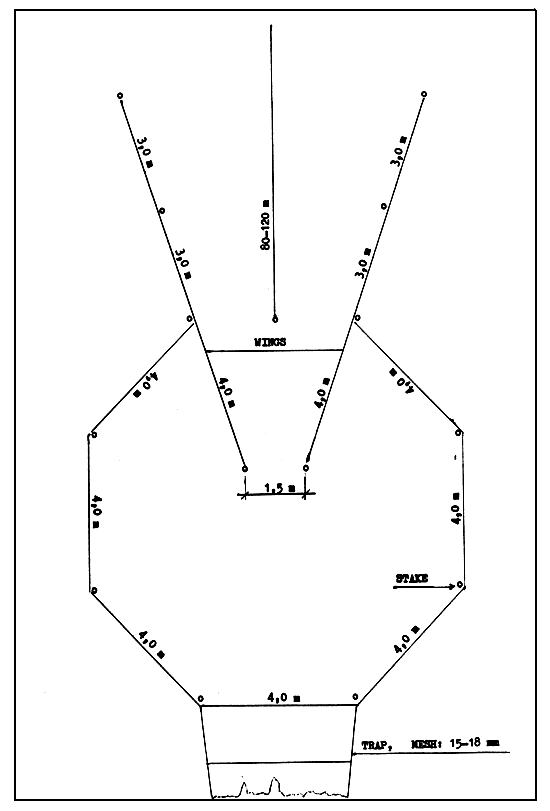
Fig. 1
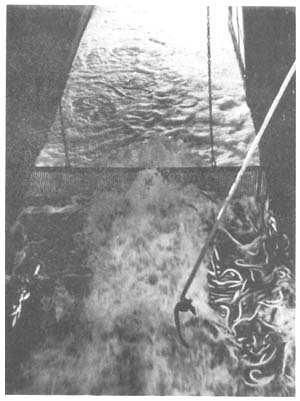 | Fig. 2 The eel-rack in operation at Siófok. |
| Fig. 3 Lifting the tank of the eel-rack at Siófok. | 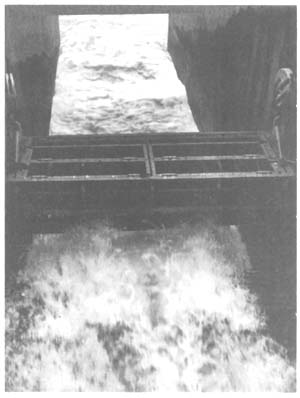 |

Fig.4 The tank of the eel-rack at Siófok.
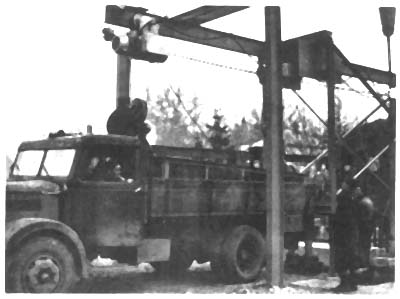
Fig. 5 Transportation of the tank of the eel-rack at Siófok.
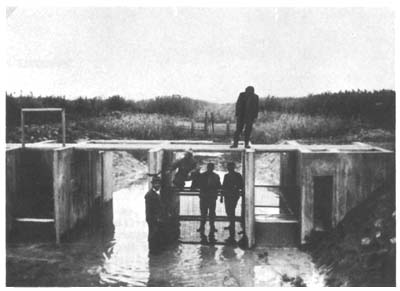
Fig. 6 Eel channel weir of Velence.